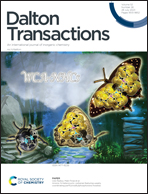High-density low-coordination Ni single atoms anchored on Ni-embedded nanoporous carbon nanotubes for boosted alkaline hydrogen evolution†
Abstract
Modulating the coordination environment of single-atom catalysts is considered an effective way to boost the electrocatalytic activity of the hydrogen evolution reaction. Herein, a novel electrocatalyst comprising high-density low-coordination Ni single atoms anchored on Ni-embedded nanoporous carbon nanotubes (Ni–N–C/Ni@CNT-H) is constructed through a self-template assisted synthetic strategy. We demonstrate that the in situ generated AlN nanoparticles not only serve as the template for the formation of the nanoporous structure, but also contribute to the coordination between Ni and N atoms. Benefiting from the optimized charge distribution and hydrogen adsorption free energy of the unsaturated Ni–N2 active structure and nanoporous structure of the carbon nanotube substrate, the resultant Ni–N–C/Ni@CNT-H exhibited outstanding electrocatalytic hydrogen evolution activity with a low overpotential of 175 mV at a current density of 10 mA cm−2, and a long-term durability for over 160 h in continuous operation. This work provides a new insight and approach to the design and synthesis of efficient single-atom electrocatalysts toward hydrogen fuel production.



 Please wait while we load your content...
Please wait while we load your content...